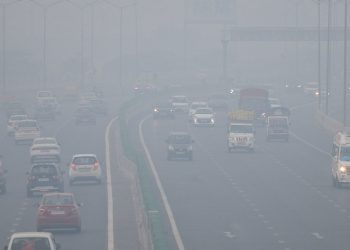New Delhi: The Energy and Resources Institute (TERI), in partnership with Environmental Defense Fund (EDF), has launched the ‘Catalogue of Indian Emission Inventory Reports’ that aims to aid policymakers and scientists prepare a reckoner of all the work done in this area.
The report presents a database of all publicly available Emission Inventories (EI) and several previously un-referred studies for India to help policymakers and scientists prepare reckoner of all the work done in the area. About 200 EI reports have been collated and made available with hyperlinks for researchers and policymakers to use. They have also been sectorally classified for ease.
Emission inventories have been prepared for several Indian cities and states, however several of these EI reports have not been given due attention. “This report presents a database of all publicly available EI reports and several previously un-referred studies for India to help policymakers and scientists prepare reckoner of all the work done in the area,” TERI said on January 14 when the document was launched.
The document has a systematic tabulation of EI studies as per the source contribution – total emissions, transport, residential, industrial, power plants, agriculture, waste and others – along with details such as geography, grid size, emission factors used, and type of data collected (primary surveys vs secondary literature). Each sector list also consists of the pollutants studied and highlighted those reports that have adhered closely to the existing guidelines from the Central Pollution Control Board (CPCB), it said.
Highlighting how there is a greater emphasis on accurate and reliable emission data for all pollutants and all sources today, TERI Director General, Dr Vibha Dhawan, in her message said, “Identification and quantification of emission rates from various sources has been practiced for some time now. However, today with mandates from the Central Pollution Control Board, National Green Tribunal, MoEF&CC and the National Clean Air Programme (NCAP), many more cities are preparing emission inventories.”
The report highlights the good practices of using indigenous emission factors and the importance of using primary data and activity surveys for ground truthing. The report attempts to briefly outline the uncertainties associated with emission inventories.
As many as 132 non-attainment cities across India are part of NCAP that has been launched by the Centre as a long-term, time-bound, national level strategy to tackle the air pollution problem across the country in a comprehensive manner. It aims to achieve 20 per cent to 30 per cent reduction in Particulate Matter concentrations by 2024 keeping 2017 as the base year. The non-attainment cities are those that do not meet the prescribed air quality standards set by the Union Environment Ministry.
EDF Chief Advisor, India, Hisham Mundol, in his message, said: “All non-attainment cities under the National Clean Air Programme are now working towards developing emission inventory studies. It is, however, worthwhile to highlight the tremendous work that has already been done by the scientific community towards the same.”
(IANS)




















